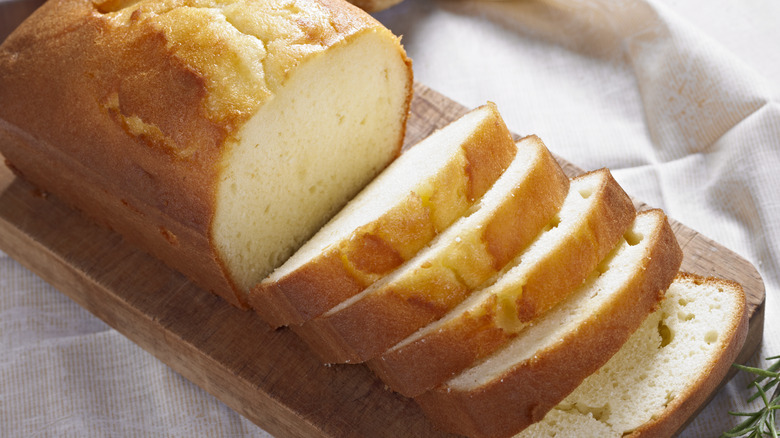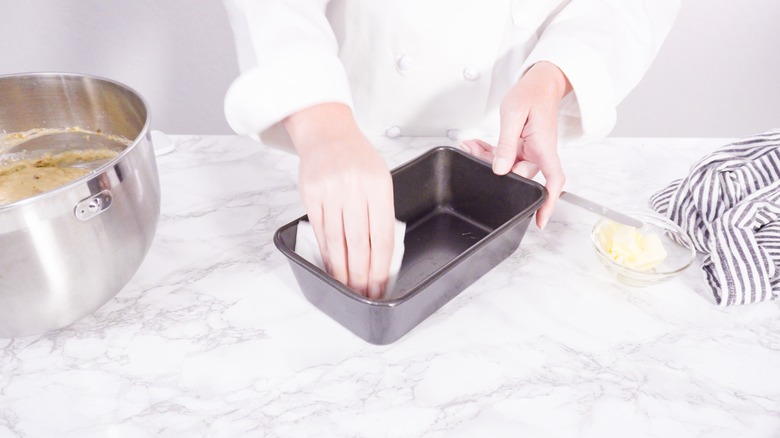The Reason You Really Shouldn't Use Cooking Spray On Pound Cakes
As simple as a basic pound cake recipe might be, this treat deserves high-quality ingredients, and that includes the ingredients you use to line the pan you'll be pouring your batter into. As tempting as it might be to give your baking container a quick spray — we get it, it's easy, fast, and convenient — the texture and taste of your pound cake will benefit from a lining of shortening and flour, instead.
If you've taken time to focus on making a delicious recipe like lemon-glazed poundcake, you will want to give your culinary efforts the best possible chance of succeeding. Cooking spray can result in a cake that hasn't fully risen once the oven timer has gone off, and instead of that spongy, fluffy texture pound cakes are known for, you may be faced with a more deflated-looking creation. Though some pound cake recipes may be humble, it certainly doesn't mean that they can't also be mighty.
Mastering texture and taste
If you're tempted to use a spray while preparing a classic pound cake recipe, you may notice that the edges of the cake turn out to be a bit crusty once you've removed the finished treat from the oven. Pound cakes are known for their soft and squishy texture, so while a crunchy crust might work for other kinds of desserts, this effect is not ideal for your pound cake creations.
Instead, carefully grease the pan with shortening. Don't go overboard with the grease and consider using a lighter oil like Crisco to ensure the batter rises fully in the oven. Coat the greased tin with a thin layer of flour so that the cake is easy to remove after baking is complete. Once cooled, you can serve the perfectly textured pound cake with raspberry jam — a la Jacques Pépin style – and savor the fruits of your culinary labor.

